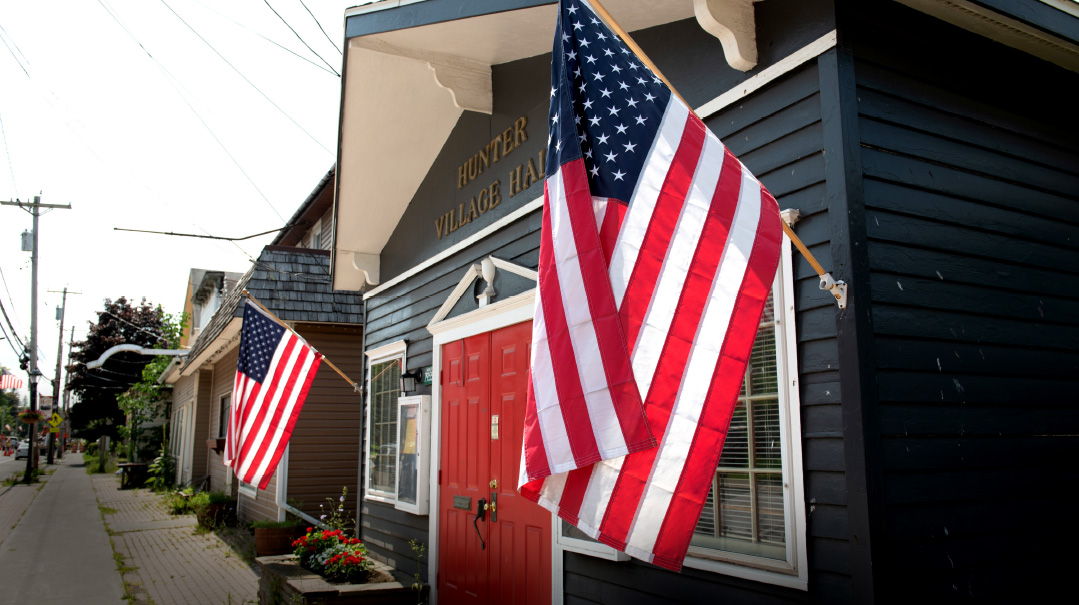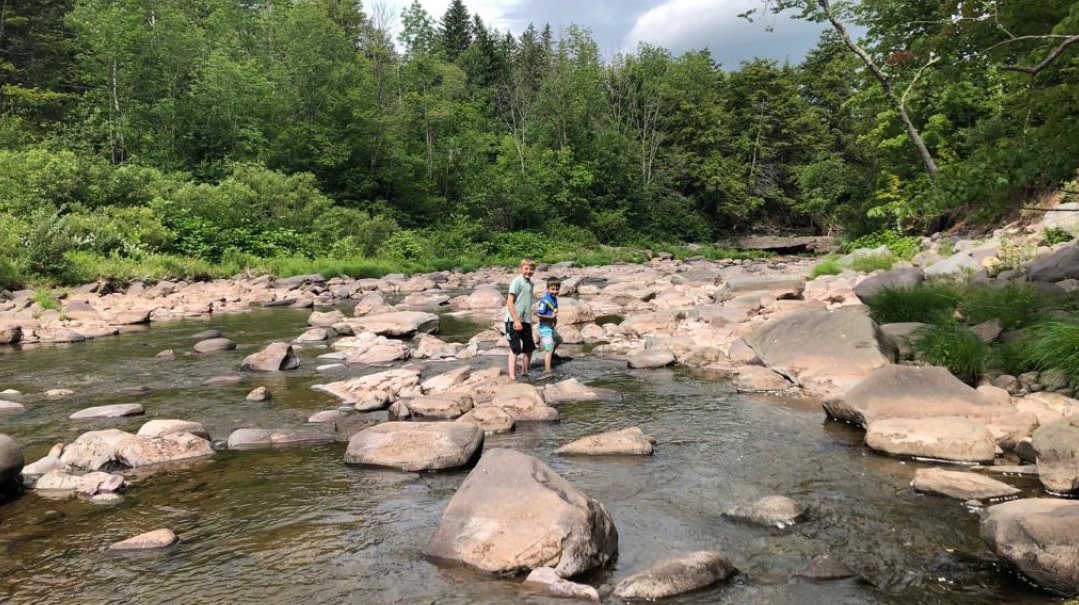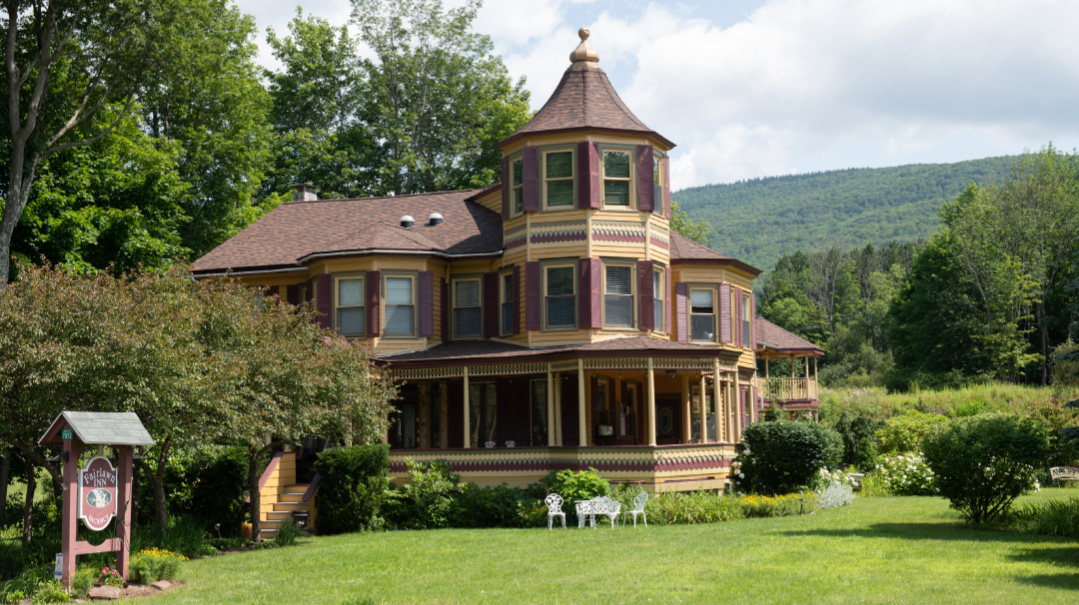Mountain Jews
| August 1, 2023A century of summer guests in the Catskills hamlet of Hunter

Photos Jeff Zorabedian, Family archives
Nestled in the picturesque Catskill region of New York State is Hunter, New York, an idyllic village which takes its name from the town’s main attraction, the towering Hunter Mountain. At 4,040 feet, the mountain is the tallest in Greene County and the second tallest in all of the Catskills. Its lush and verdant forests dominate the area’s skyline, affording those in the vicinity breathtaking scenery, the mountain’s fertile expanse pausing only to allow the meticulously designed ski slopes to gracefully cut through.
Main Street of this peaceful village lies at the mountain's foot. The town is divided by a babbling brook that provides both a background rhythm and a refreshing water source for locals and tourists to cool off in during summer months. Hunter’s Main Street boasts its single-vehicle EMS department, a fire station, an old and dusty post office, and the Hunter Village City Hall, a small building consisting of a single auditorium and a push-pin bulletin board fixed on its exterior notifying passersby of local news and regulations. (There isn’t that much to report on in this town. A visit to the village’s website contains two notices: one that the village’s three trustees will hold an emergency meeting at 1:00 on October 28, 2022, and a second telling whoever lost something in the vicinity of Karen’s Country Food Truck to please contact Kathleen at extension 4.)
A walk down the street lined with American flags and historic lampposts takes you past an old thrift shop and an antique store. Set back about 25 feet from the street stands the village’s historic Hunter Synagogue. Built in 1914, the building has a white façade interrupted by columns of robins blue and a proud stained-glass Magen David gracing the top of its third story.

Hunter’s Scoharie Creek is a fun cooling-off option for the summer visitors who, even after a hundred years, continue to converge on the town where not too much has changed
The synagogue’s interior has a small lobby, and two glass doors lead you into the main sanctuary, a charming room clearly from a bygone era but impeccably preserved. The walls and ceiling are completely paneled over with walnut wood slats, and decorative, old fashioned double lamps give off a warm glow. Large, stained-glass panels with artistic patterns forming different scenes from the Jewish calendar allow the Hunter sunlight to pour through, bathing the shul’s quaint wood and red velvet benches in a warm, natural light.
Its bimah is raised on a platform that is level to the shul’s aron kodesh, which stands erect at the front, finely crafted in oak panels and crowned with two lions holding a blue Luchos, the Aseres Hadibros lettered in gold. The aron kodesh is flanked by an American and Israeli flag respectively, both bearing the ceremonial yellow tassels at their fringes.
During the year, the historic synagogue remains largely empty, save for the High Holiday services attended by some locals and occasionally, weather and mood permitting, a monthly Friday night dinner held in a small annex off to the side of the vestibule. But come July and August, or more accurately Tammuz and Av, and the sleepy village suddenly sees a stream of guests who make their way up to Hunter for their bein hazmanim vacation.
Three times every day, the migrating menfolk convene in the historic synagogue, a decidedly yeshivish crowd occupying its stately pews. Though it’s a far cry from the bright, modern, and air-conditioned batei medrash they are accustomed to in their hometowns, the historic synagogue is more than a venue to chap a quick minyan — the shul is a highlight, an almost magical part of their stay.

The original shul built in 1904 by businessman and philanthropist Harry Fischel. While the shul didn’t endure, the mansion he built nearby did, still standing in its original grandeur
Mansion on Main Street
A bronze plaque affixed to the synagogue door solemnly informs visitors that they are entering historic grounds. In 1999, the 120-year-old synagogue was added to the National Register of Historic Places, the US Interior Department’s official list of the nation’s sites and objects deemed worthy of preservation for their historical significance or “great artistic value.” The criteria for a listing on the National Register includes excellence in architecture, and the file within the national archives catalog enthuses about the edifice’s physical structure, describing the building in painstaking detail. What it doesn’t note is that the synagogue has rich religious and historical significance as well.
Records indicate that the synagogue was constructed between 1909 and 1914, and was actually the second shul to be built in Hunter. Preceding it by just five years was the “Fischel Shul,” an impressive shul that was located just down the road on Main Street and held the distinction of being the very first Orthodox house of worship in the entire Catskill region.
The Fischel Shul, built by the great early 20th century businessman, philanthropist and askan Harry Fischel, was constructed to accommodate city dwellers who, like their grandchildren in generations to come, were attracted by the cool Catskills air, and decided to migrate upstate for the summers. Like today, large segments of those early summer dwellers chose to vacation in Liberty and Monticello, the area referred to colloquially as the “mountains,” though many folks chose to continue their journey north to an even higher altitude, to the Tannersville-Hunter area.
Oops! We could not locate your form.







